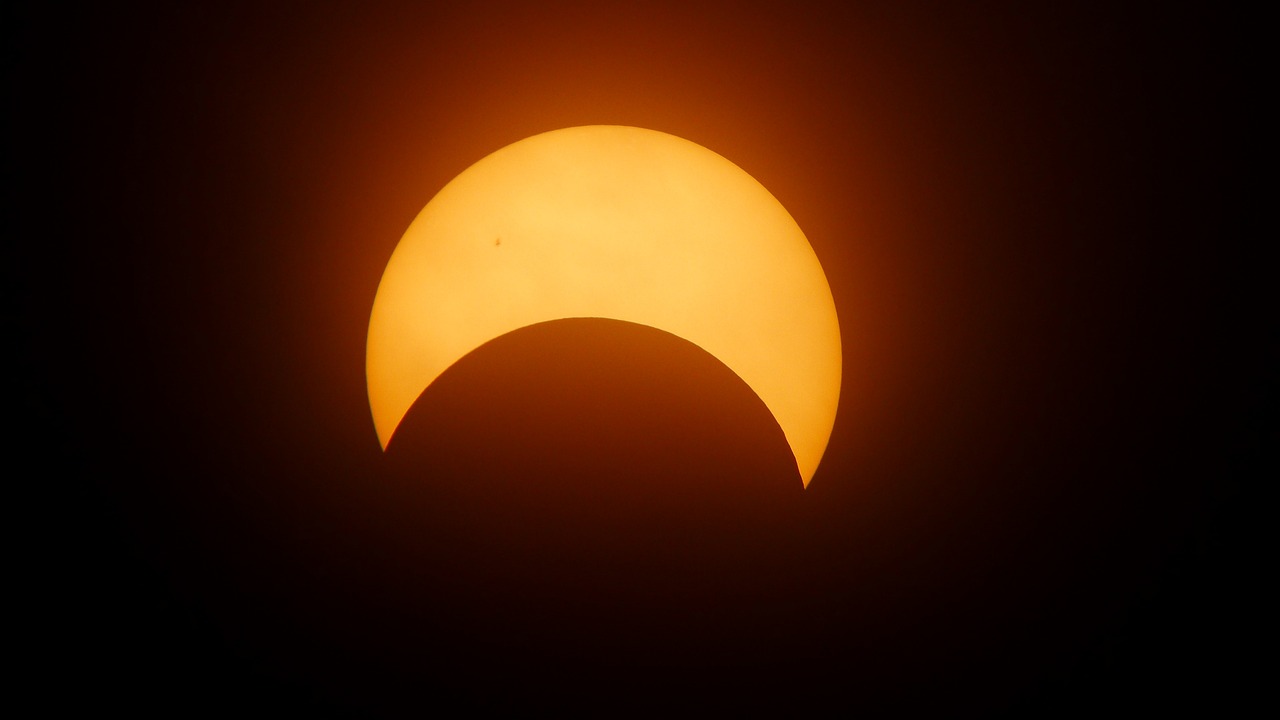It’s a sunny day, but a shadow falls over the land. This is darker than a cloud covering the sun: the light dims completely and for a few moments, day turns into night. This is a solar eclipse.

A solar eclipse occurs when the moon passes between the Sun and the Earth. By doing so, the moon stops some of the Sun’s light from reaching Earth. The resulting shadow means that, temporarily, day turns into night at certain places.

In a total solar eclipse, the Sun is completely covered for up to eight minutes. The Sun’s outer
atmosphere, the corona, shows clearly at this time.
The eclipse is not seen from every place on Earth, but only from the locations where the shadow falls.
We should never look directly at a solar eclipse. Even though it appears darker, the harmful rays of the Sun do damage our eyes. Special glasses are used to view a solar eclipse.

Children can also make a pinhole camera and see the eclipse through that.
Do try that on your next solar eclipse!

